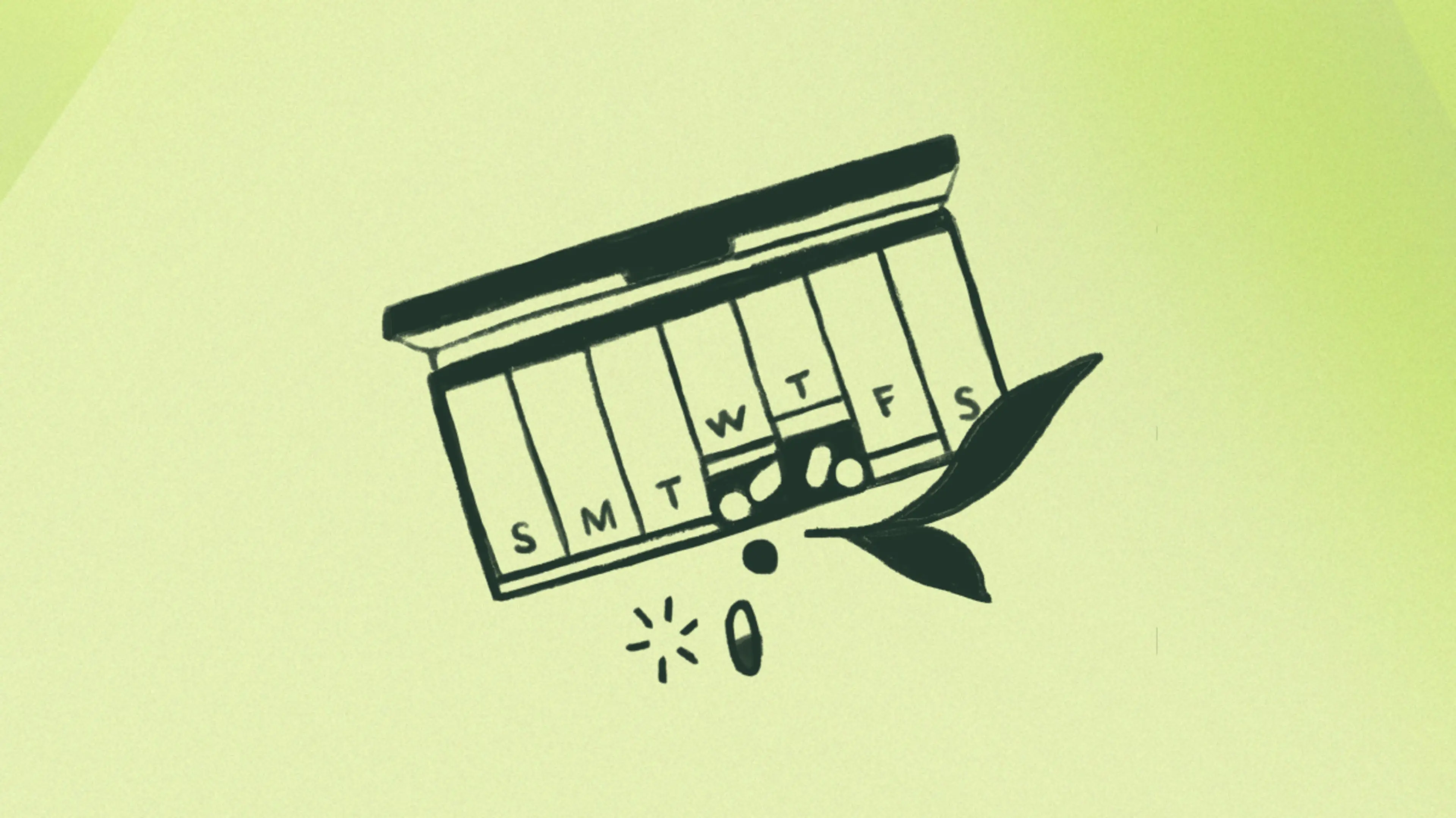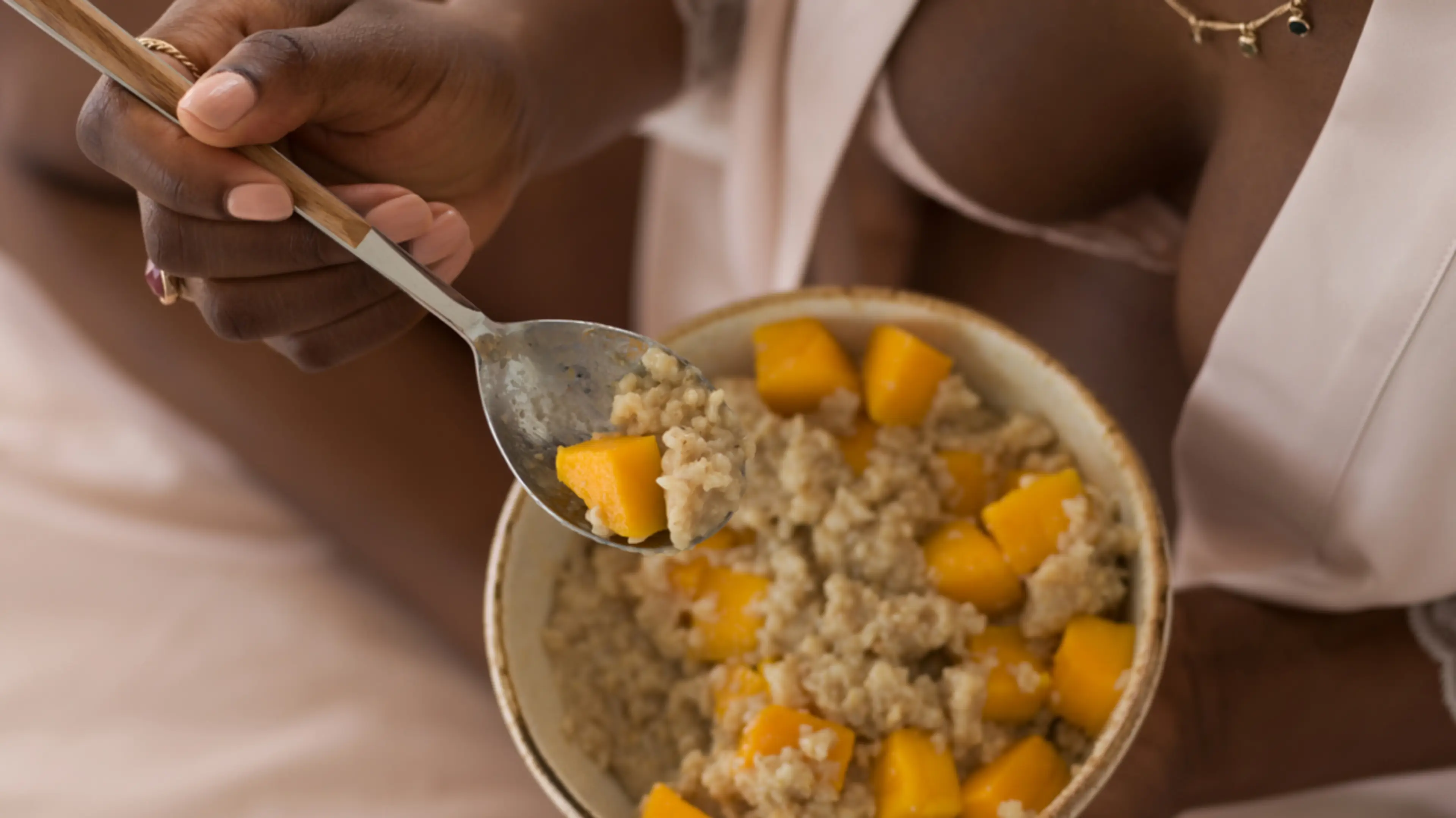TLDR: Folate is a super important nutrient to get when you’re pregnant—and before you become pregnant—due to its role in fetal development. Here’s what it is, how to get it, and how you can test to see if you’re absorbing enough folate during pregnancy.
If you’re pregnant or trying to become pregnant, you’ve probably heard it once or twice (or a million times over): you need to get enough folate during pregnancy. Folate, also known as B9, is a vitamin that helps with many key processes in the body, including cell growth and DNA formation. You can find it in foods like mushrooms, legumes, green leafy vegetables like kale, and fruits like oranges, bananas, and melons. More commonly, though, people take it as a supplement or as part of a multivitamin—like your trusty prenatal vitamin.
The issue with folate is that it’s hard to know if you’re getting enough and if your body is absorbing all that’s in your vitamin. We talked with Tamsin Jordan1 , a nutritionist specializing in women’s health, to find out why you need it and got a breakdown of the different forms you’ll see in supplements. Plus, we share the ultimate testing tool to ensure you’re getting enough folate throughout your pregnancy.
Why Do I Need Folate During Pregnancy?
Why is it so important to get this micronutrient? Folate assists and facilitates many key processes in the body2 , including helping the body break down proteins, perform cell division, and make healthy red blood cells.
In pregnancy, though, it has one of the most critical jobs: helping your baby’s brain develop. It’s important that you get enough folate in the early days and weeks of pregnancy. This is because “folate plays a central role in preventing neural tube defects in the fetus,” Jordan explains. The neural tube forms between the third and fourth weeks of pregnancy3 and later becomes the spine, brain, and skull of the fetus. Folate’s role in helping this area develop appropriately is crucial.
Because of the importance in early fetal development, your doctor or midwife will recommend you take a prenatal vitamin with folate three months (or even longer) before you try to conceive. You might even want to consider taking one regardless if you’re trying to get pregnant or not. This is so that whenever pregnancy happens for you, planned or not, you’ll have a healthy source of folate on board for those super-important early days of neural tube development.
What Are Folic Acid and Methylfolate?
When scanning the labels of vitamins, you’ve probably seen the term “folic acid” or maybe even “methylfolate.” These are non-food forms of folate commonly found in pharmaceuticals and nutritional supplements.
Folic acid: The generic term referring to the form of folate used in supplements. Some foods like bread are also fortified with folic acid (these are often labeled as “enriched”). This is often a cheaper form of folate.
Methylfolate: Also known as 5-methyltetrahydrofolate, the most “activated” or bioavailable form of folate, and is often easier for people to process in their bodies. It can be a more expensive form of folate.
Folic acid is a common form of folate and is safe for many people to ingest regularly. It is the most commonly used form of folate and is found in many of the widely available multivitamins and prenatal vitamins on the market. Once folic acid is ingested, the body must convert it to the active form of folate—methylfolate—before it can use it appropriately and to its full benefit. When you take methylfolate over folic acid, the body gets the active form right away and there is no need to
How Much and Where to Get Enough Folate In Pregnancy
Food can be a source of much of the healthy folate you consume. Foods like leafy greens, fruits, legumes, mushrooms, and avocados are all rich sources of folate and can be easy to incorporate into many of your meals, from salads to smoothies to soups. All of these foods can be part of a well-rounded diet throughout your pregnancy.
It matters how you’re preparing your food, though, and for folate that means you should think raw. Jordan explains that “It is important to note that 50-80% of folate can be lost in food preparation by heat, oxidation, and ultraviolet light. For that reason, raw foods are higher in folate than cooked foods.” So if you’re aiming for lots of folate in your diet, uncooked foods (like salads!) are probably the best way to go.
For most people, taking a supplement is the easiest way to ensure adequate folate intake. In general, most prenatal vitamins will contain enough folic acid or methylfolate for your daily intake requirements. The CDC recommends that all women who could become pregnant take 400 mcg – 800 mcg (micrograms)4 of folic acid per day, in addition to consuming food with folate in it. Women who are pregnant should up their intake to 600 mcg of folic acid5 . Jordan suggests taking your supplements with, or right after, a meal to decrease any nausea.
Choosing A Prenatal Vitamin with Folate
In addition to testing yourself, it’s important to take the right prenatal vitamin.
Every prenatal vitamin on the market will have a form of folate. “Some supplements will also have additional calcium folinate (folinic acid) which can help increase absorption and tolerance,” Jordan adds. As always, talk to your doctor about the appropriate supplements and amounts you need.
However you get your folate, be sure to take it before and during pregnancy. Adequate folate will help contribute to a healthy pregnancy for both you and your baby.












